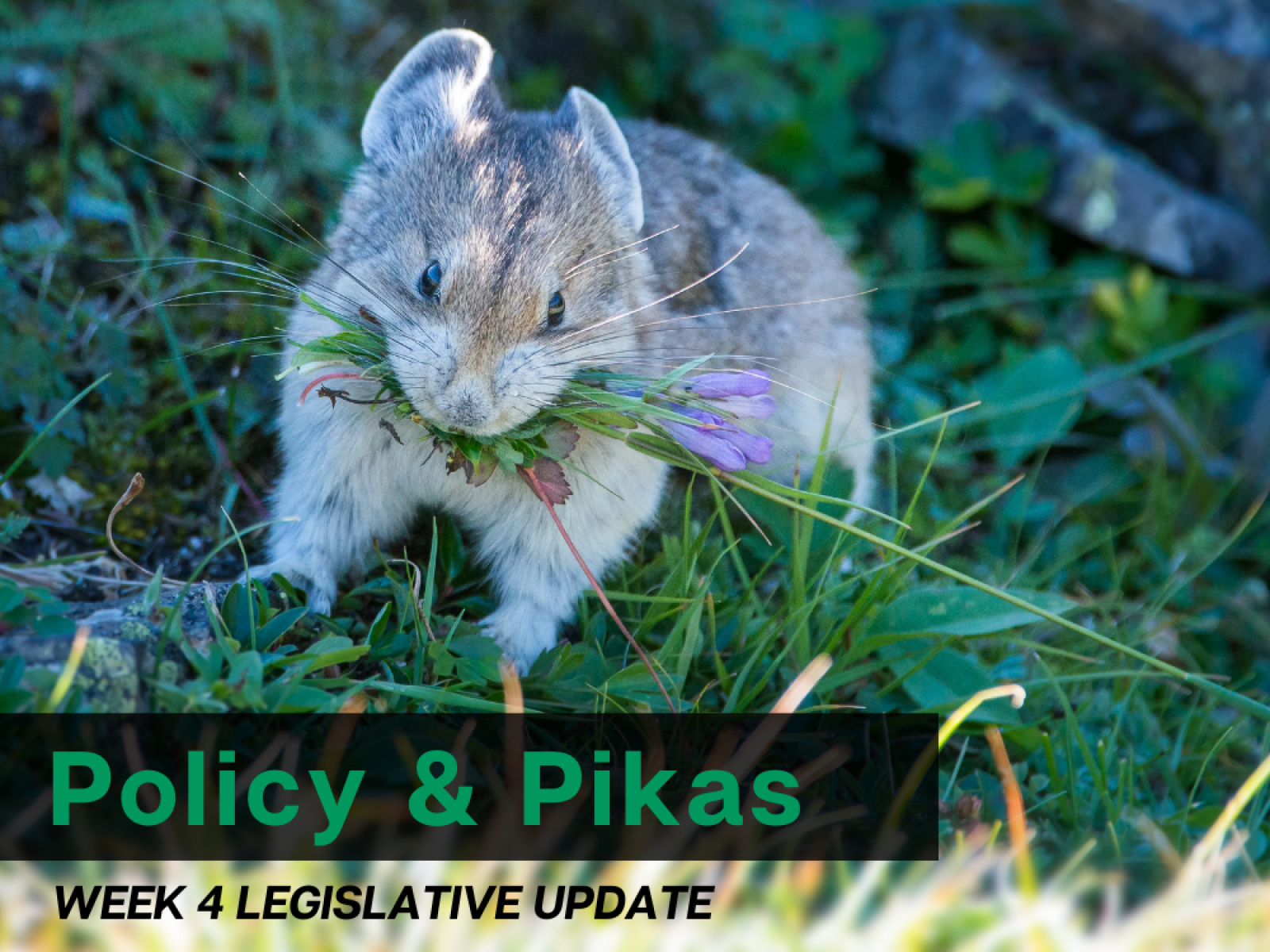Last week marked the halfway point of the legislative session. So far, we’ve seen over 700 bills and resolutions introduced. Although we’ve enjoyed a relatively slow start to the session with the land management, transportation, and air/water issues we’ve been watching, we expect things to ramp up in the coming weeks.
As the session winds down, lawmakers suspend the rules to bypass committees–meaning less time to vet bills and less time for public engagement. Your attention and actions will be as critical as ever. Follow Save Our Canyons on Facebook and Instagram (@saveourcanyons)–it's the fastest way to get updates about important meetings, petitions, and other actions.
Here’s a look at last week, where we heard a presentation on why tree thinning won’t save the Great Salt Lake, saw a continued push for zero-fare transportation, and attended Nonprofit Day on the Hill, where we celebrated other amazing community organizations.
Salt Lake County Council Meeting on Tree Thinning
On February 7, the Salt Lake County Council invited a panel of experts to speak on water conservation and forest management. The presentation came in response to Councilwoman Dea Theodore’s (District 6) assertion that trees consume "trillions of gallons of water that would otherwise flow downstream to the Great Salt Lake.”
Overall, there was considerable pushback to Councilwoman Theodore’s proposal.
Ben Abbott, professor of ecosystem ecology at Brigham Young University (BYU), and Brian Brown, a master’s student at BYU, presented research showing the impact of forest thinning on water availability. Although the results were mostly inconclusive, forest thinning did show to actually reduce the amount of available water in some places with drier climates. Trees provide precious shade that reduces the amount of sunlight hitting the snow and, in turn, the rate of evaporation. Imagine hiking in the Wasatch Mountains on a sunny day and catching sweet reprieve under the shade of a tree. Now imagine if there was no shade at all–you’d probably melt too!
Laura Briefer, Director of SLC Department of Public Utilities, and Rebecca Hotze, District Ranger for the Salt Lake Ranger District (US Forest Service), spoke about the important role forest management plays in maintaining a healthy watershed. Overgrown forests increase the risk of wildfires, which could threaten the quantity and quality of water flowing out of the Wasatch Mountains.
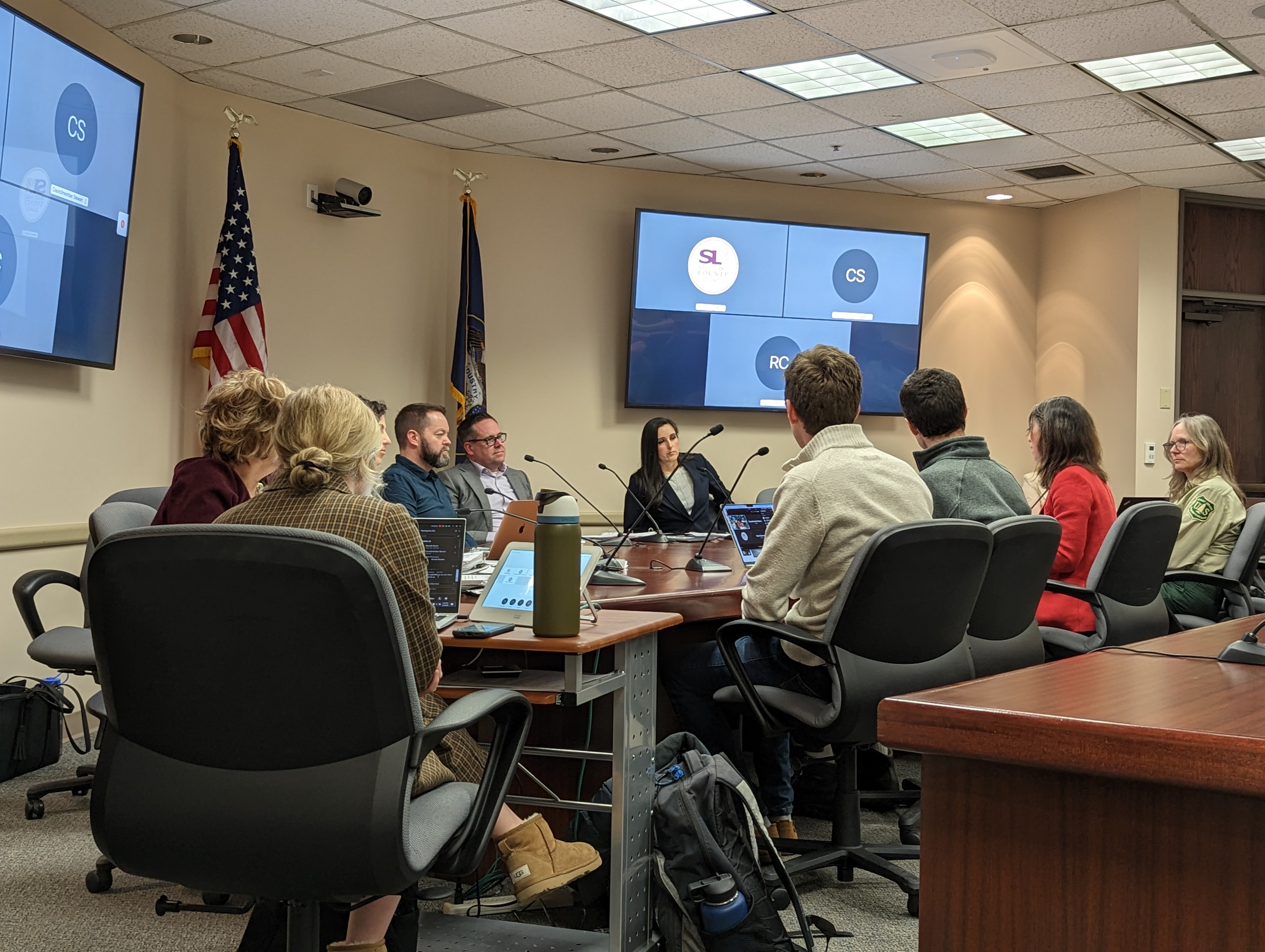
The Great Salt Lake Strike Team, composed of researchers from the University of Utah, Utah State University, and various state agencies, released a timely report last week. The team explored policy options to restore the Great Salt Lake and concluded that the impact of tree thinning on the lake’s water inflows “is unclear and likely to be minimal.”
The main takeaway? Proper forest management is critical to help prevent wildfires and support a healthy watershed, but it isn’t the silver bullet to saving our Great Salt Lake. Instead, we should focus our energy and dollars on conservation efforts.
Support Zero Fares for Cleaner Air
Protecting the Wasatch Mountains is tied directly to public transportation.
For example:
- Improving traffic congestion in Big and Little Cottonwood Canyon by offering enhanced, year-round bus service (supplemented by measures like occupancy-based tolling) would reduce the number of vehicles on the road and, as a result, vehicle emissions. During the inversion a few weeks ago, breathing the air in Utah for 24 hours was comparable to smoking up to five cigarettes.
- Connecting communities west of I-15 with express public transit routes to the Wasatch Mountains would promote more equitable access to our public lands for all user groups and communities.
The Salt Lake Valley continues to be “car-centric”, but we believe that can change through better public transportation options and lower fares.
Senator Weiler requested a one-time appropriation of $25.5 million to fund a yearlong statewide zero-fare transit pilot program. The pilot program, which seeks to increase public transit ridership by 24-36%, is inspired by the Utah Transit Authority’s (UTA) Free Fare February in 2022. (UTA is currently offering ten zero fare days from February 12-21.)
During Free Fare February, the UTA bus (fixed routes, flex routes, and UVX), ski bus, TRAX, Frontrunner, UTA On Demand, and Paratransit were free for riders. UTA saw a 16% increase in ridership on weekdays and a 46% increase in ridership on weekends, across all modes of transit. February ridership also resulted in a significant decrease in vehicle source emissions.
So far, Sen. Weiler’s request hasn’t been identified as a priority by the Executive Appropriations Committee. We encourage you to reach out to members of the committee and ask them to support the Statewide Zero Fare Transit Pilot Program. Our wonderful partners at HEAL Utah created a template you can use.
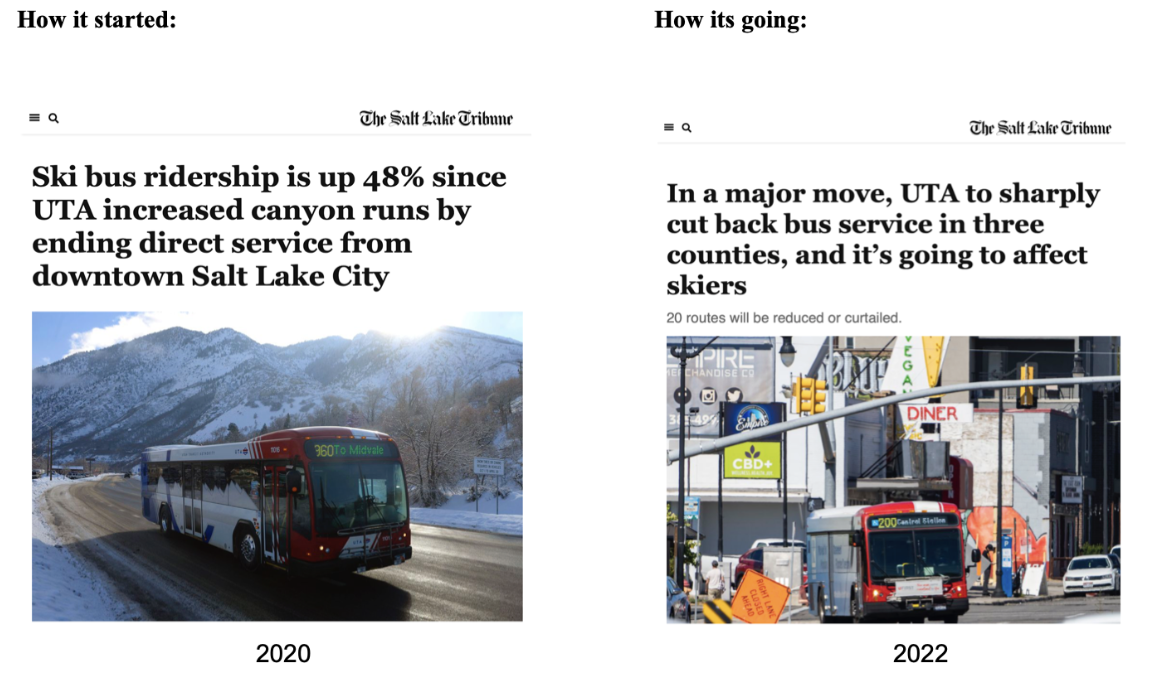
Traffic congestion, and our air quality, will continue to worsen unless the state invests in an accessible public transit system, both in terms of cost and proximity to riders. We all benefit from better public transit, including our mountains and canyons.
Nonprofit Day on the Hill
On February 9, Save Our Canyons participated in Nonprofit Day on the Hill. We had a great time connecting with other nonprofits and celebrating all of the important work they do for our communities. We also enjoyed engaging with legislators and everyone who stopped by to learn about what we’ve been up to. Thank you for showing up!
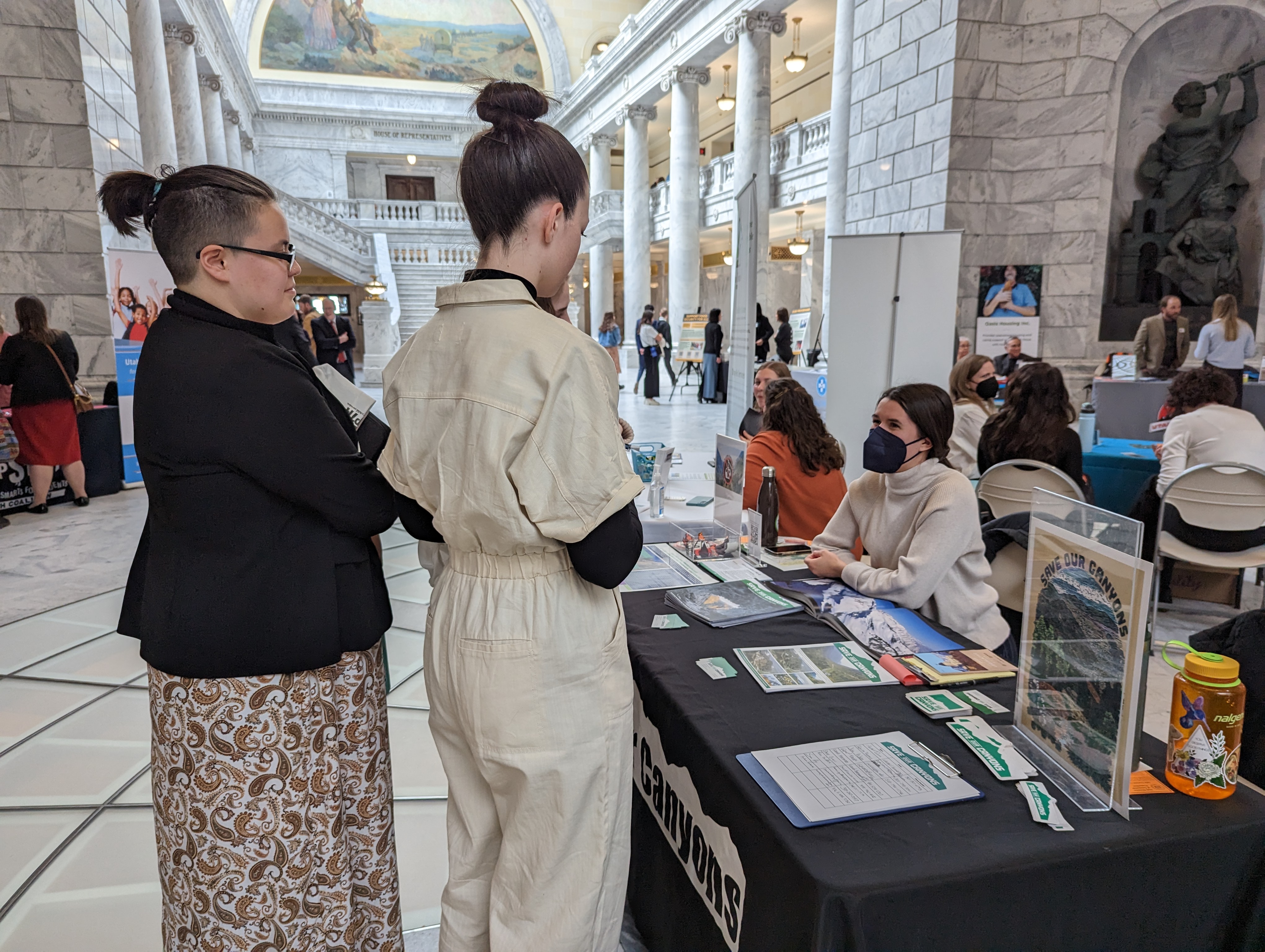
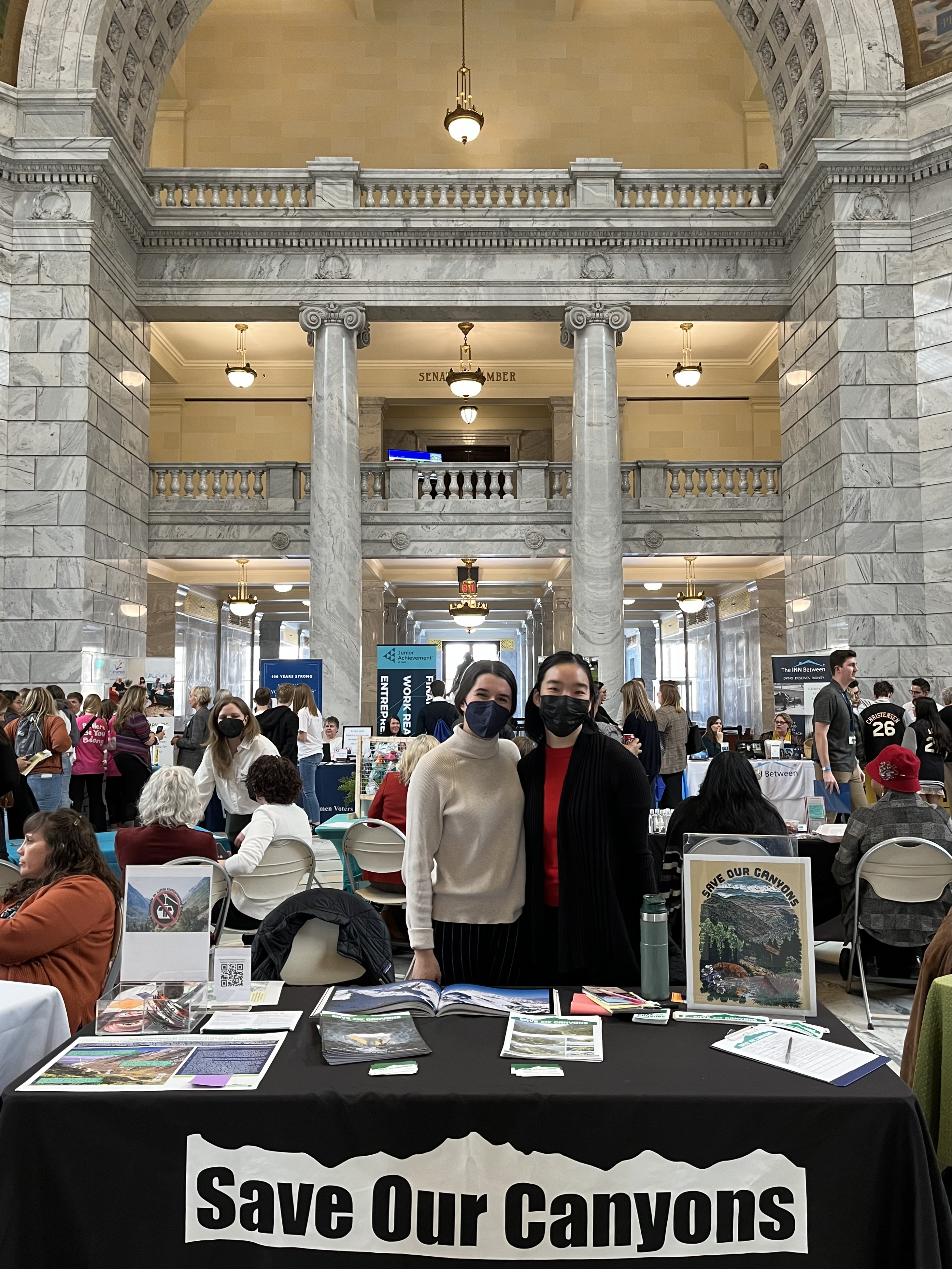
Pika Fact of the Week: While many pikas live in chilly alpine conditions, they can also survive at lower altitudes in deep, cool caves. Pikas have even been observed in the ice tubes of Lava Beds National Monument in California.

